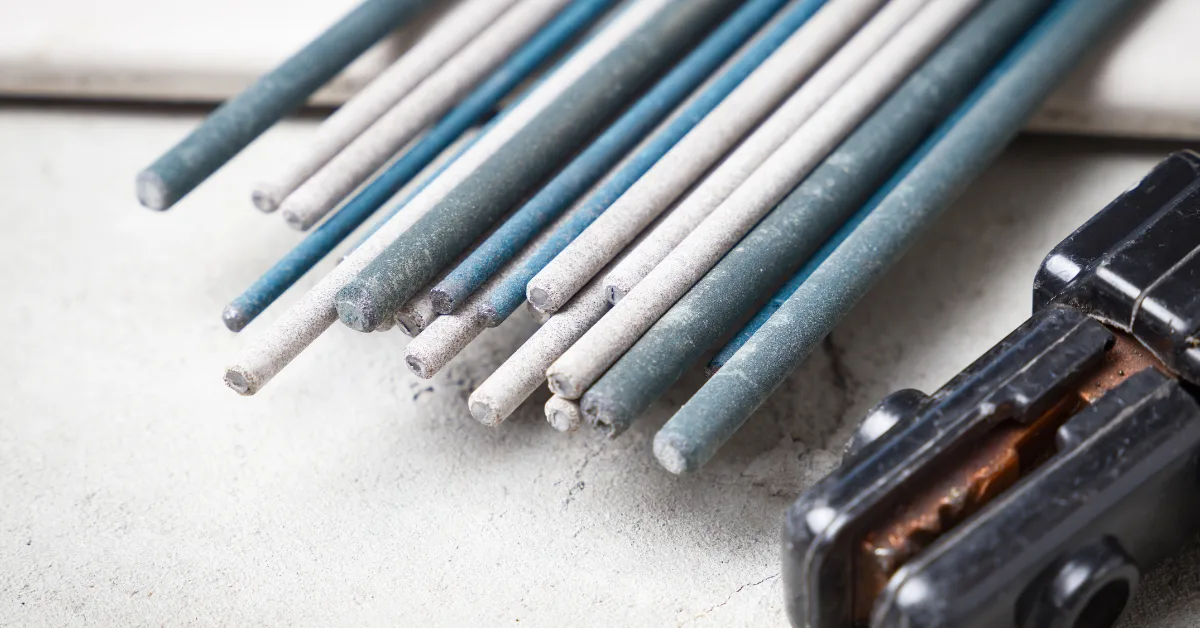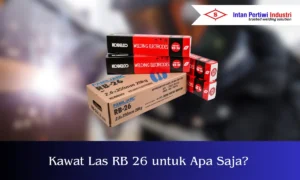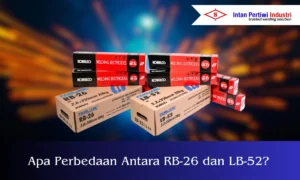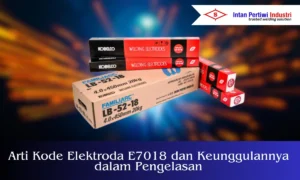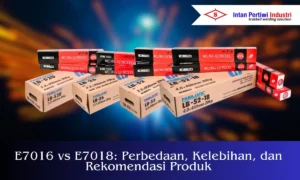Learn Function of Welding Electrodes along with the role of the core and coating, the effect on the welding position, the recommended current range, and how to prevent common defects.
The electrode is the control center of the manual arc welding process. The quality of the joint is greatly influenced by what happens at the tip of the electrode as the arc ignites.
This article discusses the core function of the electrode as well as the function of the coating, its impact on the welding position, how to choose an electrode according to the project, as well as practical flow and troubleshooting guidelines.
The goal is for welders, supervisors and engineers to understand the causes and effects behind a neat, strong and defect-free weld bead surface.
Table of Contents
ToggleWhat Are Welding Electrodes for SMAW?
In the SMAW process, the electrode consists of a metal wire core and a coating that covers the outer surface. The core supplies the filler metal.
The coating is responsible for maintaining arc stability, protecting the weld pool from atmospheric disturbances, and helping healthy metallurgical reactions.
The combination of core and coating composition determines the arc character, ease of operation, penetration, speed, and slag and bead appearance.
Core Role and Coat
The Core supplies metal to the joint, affecting strength, toughness, and composition compatibility with the base metal.
Coating produces shielding gas, forms slag, stabilizes the arc, binds oxides, adds alloying elements, and manages the level of diffusible hydrogen.
Welding Electrode Function
The function of the welding electrode determines the quality of the joint from the moment the arc is ignited. It has a core role, supplying filler metal, and a coating role, stabilizing the arc, protecting the pool, and facilitating the metallurgical reaction.
This section explains the role of the electrode in shaping the quality of the joint from the moment the arc first ignites.
In a single rod, the core supplies the filler metal while the coating regulates arc stability, protects the pool, and aids the metallurgical reaction to create a neat and strong bead.
To facilitate understanding, the discussion is divided into two main groups, namely the electrode core function and theelectrode coating function which together determine penetration, pool control, productivity, and resistance to defects.
4 Core Functions of Electrodes
Consistent filler metal transfer so that gap filling is controlled.
Determine the composition of the weld results so that the mechanical properties meet the job requirements.
Be a reliable current conductor so that the arc burns stably.
Regulates the melting rate which affects the working speed and pool control.
7 Functions of Electrode Coating
Forms a shielding gas that expels oxygen and nitrogen from the weld pool.
Forms slag that seals the pool, slows cooling, and makes cleaning easier.
Stabilizes the arc so that ignition and arc continuity are smooth and easy to control.
Binds oxides and impurities through deoxidation reactions so that the beads are cleaner.
Adding alloying elements to adjust mechanical properties and wear or corrosion resistance.
Regulate ionization to maintain current flow and arc stability.
Controlling humidity to suppress hydrogen content that can trigger cracking.
Electrode Coating Types and Their Impact on Welding Results
Rutile for ease of daily operations
A popular example is RB 26 welding wire. Rutile is known for its easy relighting, smooth bead appearance, relatively easy slag removal, and its suitability for many common fabrication applications.
Suitable for flat and horizontal welding positions and can be used vertically with the right technique.
Low hydrogen for crack resistance in challenging materials
The LB series such as LB 52 welding wire, LB 52 18 welding wire, and LB 52U welding wire are designed to suppress diffusing hydrogen. Its advantages are felt in thick, high-strength materials that are susceptible to heat-affected cracking.
Proper drying and storage are essential to maintain the benefits of low hydrogen.
Cellulose for high penetration and speed
Cellulose electrodes like 6010 are known for their sharp penetration and are well-suited for pipework, particularly for downward vertical movements. Their arc characteristics are agile and fast, but they require good pool control skills.
The Influence of Electrode Function on Welding Position
- Flat and horizontal
Rutile provides a neat bead surface and easy slag removal. Low hydrogen provides superior mechanical properties in critical structures.
- Vertical up and vertical down
Vertical rises require good pool control as well as linings that help support the pool. Low hydrogen is often chosen for critical connections. Vertical down prioritizes speed, cellulose excels here.
- Overhead
A controlled pool and unobtrusive slag are required. Low hydrogen and rutile can work well if the flow and technique are properly adjusted.
How to Choose Electrodes According to Material and Project Purpose
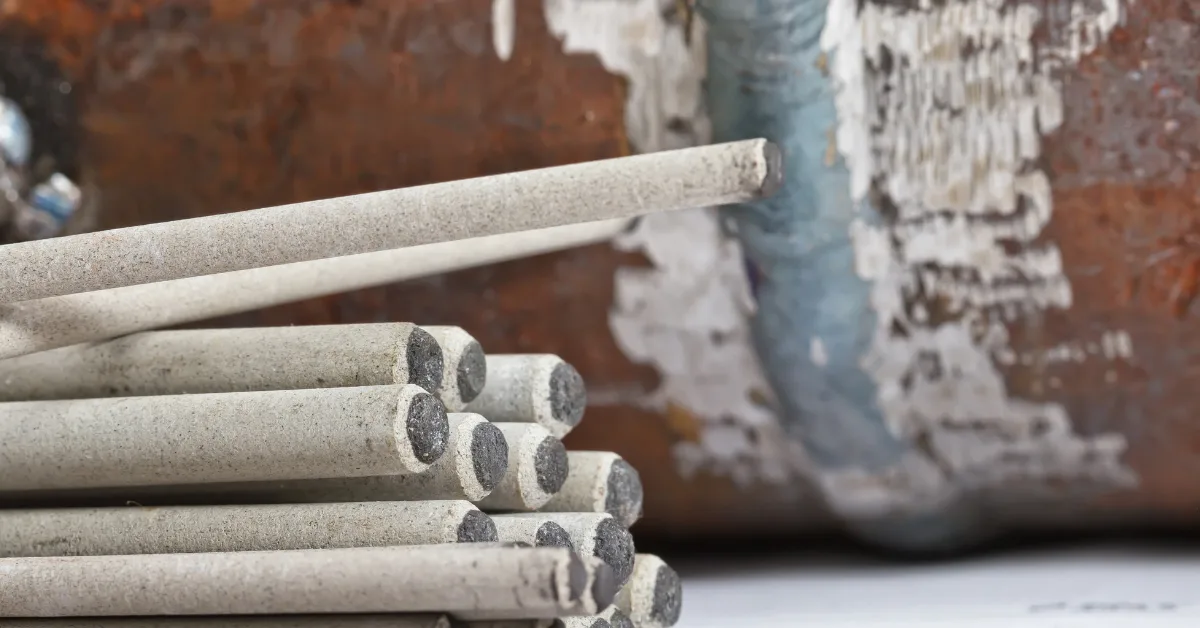
Carbon and medium strength steel
Rutile such as RB 26 is ideal for general fabrication and daily work that demands speed and neatness.Thick or high strength material
Choose a low-hydrogen grade such as LB 52, LB 52 18, or LB 52U to reduce the risk of hydrogen cracking. Include a preheating procedure when necessary.Pipe and field applications that demand speed
Cellulose such as 6010 provides high penetration and fast progress, especially on vertical drops.Productivity vs highest quality considerations
If productivity is the primary goal, focus on fast movement and cellulose. If mechanical properties and crack resistance are the primary goals, prioritize low hydrogen.
Recommended Practical Flow per Type and Diameter
Use reasonable initial values, then adjust based on the pool appearance, arc sound, and workpiece thickness. The following values are general ranges for healthy machines and cables. Current units are in amperes.
Welding Electrode RB 26
Diameter 2.6 millimeters
Flat and horizontal: 60 to 85
Vertical rise: 60 to 85
Above head: 65 to 85
Diameter 3.2 millimeters
Flat and horizontal: 80 to 110
Vertical rise: 80 to 110
Above head: 85 to 110
Diameter 4 millimeters
Flat and horizontal: 105 to 140
Vertical rise: 100 to 130
Above head: 95 to 130
Welding Electrode LB 52 18
Diameter 2.6 millimeters
Flat and horizontal: 70 to 90
Vertical rise: 65 to 85
Above head: 70 to 90
Diameter 3.2 millimeters
Flat and horizontal: 90 to 115
Vertical rise: 80 to 110
Above head: 90 to 115
Diameter 4 millimeters
Flat and horizontal: 120 to 150
Vertical rise: 105 to 140
Above head: 100 to 135
Class 6010 Welding Electrode
Diameter 3.2 millimeters
Flat and horizontal: 80 to 105
Vertical down: 80 to 105
Vertical rise: 85 to 105
Above head: 85 to 105
Noted
Start from the middle of the range and then move up or down little by little.
Keep the arc distance short for rutile and low hydrogen.
For cellulose on vertical downs, maintain a smooth and consistent motion.
Make sure the ground cable is clean, the clamp is tight, and the electrical connection is not loose.
Quick Troubleshooting: Symptoms, Causes, Solutions
Porosity in beads
Common causes: moisture on the coating, dirty surface, current too low.
Solution: dry the electrode according to the instructions, clean the surface from rust and oil, increase the current gradually.
Slag is difficult to peel off
Common causes: incorrect electrode angle, non-uniform movement speed, inappropriate current.
Solution: adjust the push or pull angle according to the position, stabilize the hand speed, adjust the current until the pool looks stable.
Undercut on the edge of the bead
Common causes: excessive current, too fast movement, excessive swing.
Solution: lower the current, slow down a bit, use small, controlled swings.
Less penetration
Common causes: low current, wrong angle, too slow a feed rate that builds up metal on the surface.
Solution: increase the current sufficiently, correct the angle, speed up a bit so that the heat gets to the roots.
Heat affected area cracks
Common causes: high hydrogen diffusion, too rapid cooling, thick and hard material.
Solution: select low hydrogen, preheat if necessary, store the electrode in a storage oven.
After understanding the role and characteristics of electrodes, apply them to real cases by reading welding wire sizes for thin iron so that the diameter selection is more precise and the risk of penetration can be minimized.
Electrode Storage and Drying
Store electrodes in tightly closed packaging before opening.
For the low hydrogen series, use a storage oven at the manufacturer's recommended temperature.
Re-dry according to instructions when the package is opened for a long time or exposed to humid air.
Note the time you put it in and out of the oven for consistency.
Use a warm carrying container when working in the field in humid weather.
Short Case Study
Case one
The thick-plate joint showed fine cracks near the root after cooling. Switching to a low-hydrogen series, applying a light preheat, and adjusting the current to a medium range successfully eliminated the cracks in subsequent experiments.
Case two
Slag adhered stubbornly when using rutile for vertical grinding. After adjusting the electrode angle, increasing the current slightly, and making the strokes small and consistent, the slag came off with a light tap, and the bead surface appeared cleaner.
If you want to apply the concept to a real-life case study, continue to how to calculate welding wire requirements for pipes for calculation steps, simple formulas, numerical examples, and efficiency tips in the field.
Related Product Recommendations
RB 26 for general fabrication, neat beads, and ease of operation.
LB 52, LB 52 18, LB 52U for critical structures and thick materials requiring hydrogen control.
Class 6010 for pipe and down-the-hole vertical work where speed and penetration are important.
Need the right recommendation for your project? Please contact the team via WhatsApp using the link provided on the page.
Practical Summary
The core and coating functions work together to keep the arc stable, protect the pool, improve metallurgy, and produce a neat and strong bead.
Choose rutile for simplicity, low hydrogen for critical structures, cellulose for pipes and fast rates.
Set the current within a reasonable range, maintain the angle and distance of the arc, and practice consistent movement patterns.
Store electrodes in a disciplined manner so that their technical benefits are not lost due to moisture.
Welding Electrode Function FAQs
What is the main function of electrode coating?
The coating produces shielding gas and slag, stabilizes the arc, binds oxides, adds alloying elements, and helps control humidity so that diffusing hydrogen levels remain low.
Why does the low hydrogen series suppress cracking potential?
Because the hydrogen content entering the weld metal is lower, this reduces the risk of cracking in thick, high-strength materials. Consider preheating and controlled cooling.
When to choose vertical up and when to choose vertical down?
Vertical up provides better pool control and adequate penetration for medium to thick thicknesses. Vertical down is faster for thin plates but requires greater skill to avoid loss of fusion.
What is the safe starting current for a RB 26 diameter of three point two millimeters on a vertical?
Ranging from eighty to one hundred and ten. Adjust based on the appearance of the pool, the sound of the bow, and the visible splash.
Why is the slag difficult to remove even though the current feels sufficient?
Check the electrode angle, hand speed, and arc distance. If it's still difficult, increase the current slightly or adjust the arc pattern to ensure the pool and slag form the correct layer.


